Sequential Recommendations on Board-Game Platforms
Abstract
1. Introduction
- To the best of our knowledge, we are the first to propose recommendation systems for board-game platforms.
- We present a large-scale dataset of user-game interactions from BGG for research in games. It contains 108,536 board games and 511,960 users with over 47 million ratings.
- We provide the potential of sequential recommendations in the board-game platform.
2. Related Work
2.1. Recommendations in Game Markets
2.2. General Recommendation Systems
2.3. Sequential Recommendation Systems
3. Dataset and Models
3.1. BGG Dataset
3.2. Recommendation Models
3.2.1. GRU4Rec
3.2.2. Caser
3.2.3. SASRec
4. Experiments
4.1. Experimental Setup
4.1.1. Dataset
4.1.2. Evaluation Metrics
4.2. Performance Analysis
5. Conclusions and Future Work
Author Contributions
Funding
Conflicts of Interest
References
- Sifa, R.; Drachen, A.; Bauckhage, C. Large-scale cross-game player behavior analysis on steam. In Proceedings of the Eleventh Artificial Intelligence and Interactive Digital Entertainment Conference, Santa Cruz, CA, USA, 14–18 November 2015. [Google Scholar]
- Cheuque, G.; Guzmán, J.; Parra, D. Recommender Systems for Online Video Game Platforms: The Case of STEAM. In Proceedings of the 2019 World Wide Web Conference, San Francisco, CA, USA, 13–17 May 2019; pp. 763–771. [Google Scholar]
- Anwar, S.M.; Shahzad, T.; Sattar, Z.; Khan, R.; Majid, M. A game recommender system using collaborative filtering (GAMBIT). In Proceedings of the 2017 14th International Bhurban Conference on Applied Sciences and Technology (IBCAST), Azad Rashmir, Pakistan, 10–14 January 2017; pp. 328–332. [Google Scholar]
- Arizton. Available online: https://www.reportlinker.com/p05482343/Board-Games-Market-Global-Outlook-and-Forecast.html (accessed on 24 September 2019).
- Roeder, O. Crowdfunding Is Driving A $196 Million Board Game Renaissance. Available online: https://fivethirtyeight.com/features/crowdfunding-is-driving-a-196-million-board-game-renaissance (accessed on 20 September 2019).
- Hariri, N.; Mobasher, B.; Burke, R. Context-aware music recommendation based on latenttopic sequential patterns. In Proceedings of the Sixth ACM Conference on Recommender Systems, Dublin, Ireland, 9–13 September 2012; pp. 131–138. [Google Scholar]
- Tang, J.; Wang, K. Personalized top-n sequential recommendation via convolutional sequence embedding. In Proceedings of the Eleventh ACM International Conference on Web Search and Data Mining, Los Angeles, CA, USA, 5–9 February 2018; pp. 565–573. [Google Scholar]
- Kang, W.C.; McAuley, J. Self-attentive sequential recommendation. In Proceedings of the 2018 IEEE International Conference on Data Mining (ICDM), Singapore, 17–20 November 2018; pp. 197–206. [Google Scholar]
- Cheng, Z.; Shen, J.; Zhu, L.; Kankanhalli, M.S.; Nie, L. Exploiting Music Play Sequence for Music Recommendation. IJCAI 2017, 17, 3654–3660. [Google Scholar]
- Smith, B.; Linden, G. Two decades of recommender systems at Amazon. com. IEEE Internet Comput. 2017, 21, 12–18. [Google Scholar] [CrossRef]
- Covington, P.; Adams, J.; Sargin, E. Deep neural networks for youtube recommendations. In Proceedings of the 10th ACM Conference on Recommender Systems, Boston, MA, USA, 15–19 September 2016; pp. 191–198. [Google Scholar]
- Hidasi, B.; Karatzoglou, A.; Baltrunas, L.; Tikk, D. Session-based recommendations with recurrent neural networks. arXiv 2015, arXiv:1511.06939. [Google Scholar]
- Yuan, F.; Karatzoglou, A.; Arapakis, I.; Jose, J.M.; He, X. A Simple Convolutional Generative Network for Next Item Recommendation. In Proceedings of the Twelfth ACM International Conference on Web Search and Data Mining, Melbourne, Australia, 11–15 February 2019; pp. 582–590. [Google Scholar]
- Sun, F.; Liu, J.; Wu, J.; Pei, C.; Lin, X.; Ou, W.; Jiang, P. BERT4Rec: Sequential Recommendation with Bidirectional Encoder Representations from Transformer. arXiv 2019, arXiv:1904.06690. [Google Scholar]
- Meidl, M.; Lytinen, S.L.; Raison, K. Using game reviews to recommend games. In Proceedings of the Tenth Artificial Intelligence and Interactive Digital Entertainment Conference, Raleigh, NC, USA, 3–7 October 2014. [Google Scholar]
- Zagal, J.P.; Tomuro, N. The aesthetics of gameplay: A lexical approach. In Proceedings of the 14th International Academic MindTrek Conference: Envisioning Future Media Environments, Tampere, Finland, 6–8 October 2010; pp. 9–16. [Google Scholar]
- Quadrana, M.; Cremonesi, P.; Jannach, D. Sequence-aware recommender systems. ACM Comput. Surv. (CSUR) 2018, 51, 66. [Google Scholar] [CrossRef]
- Wan, M.; McAuley, J. Item recommendation on monotonic behavior chains. In Proceedings of the 12th ACM Conference on Recommender Systems, Vancouver, BC, Canada, 2–7 October 2018; pp. 86–94. [Google Scholar]
- Hu, Y.; Koren, Y.; Volinsky, C. Collaborative filtering for implicit feedback datasets. In Proceedings of the 2008 Eighth IEEE International Conference on Data Mining, Pisa, Italy, 15–19 December 2008; pp. 263–272. [Google Scholar]
- Rendle, S. Factorization machines with libfm. ACM Trans. Intell. Syst. Technol. (TIST) 2012, 3, 57. [Google Scholar] [CrossRef]
- Davidson, J.; Liebald, B.; Liu, J.; Nandy, P.; Van Vleet, T.; Gargi, U.; Gupta, S.; He, Y.; Lambert, M.; Livingston, B.; et al. The YouTube video recommendation system. In Proceedings of the Fourth ACM Conference on Recommender Systems, Barcelona, Spain, 26–30 September 2010; pp. 293–296. [Google Scholar]
- Koren, Y.; Bell, R. Advances in collaborative filtering. In Recommender Systems Handbook; Springer: Berlin, Germany, 2015; pp. 77–118. [Google Scholar]
- Guo, Y.; Wang, M.; Li, X. An interactive personalized recommendation system using the hybrid algorithm model. Symmetry 2017, 9, 216. [Google Scholar] [CrossRef]
- Salakhutdinov, R.; Mnih, A.; Hinton, G. Restricted Boltzmann machines for collaborative filtering. In Proceedings of the 24th International Conference on Machine Learning, Corvallis, OR, USA, 20–24 June 2007; pp. 791–798. [Google Scholar]
- He, X.; Liao, L.; Zhang, H.; Nie, L.; Hu, X.; Chua, T.S. Neural collaborative filtering. In Proceedings of the 26th International Conference on World Wide Web, Perth, Australia, 3–7 April 2017; pp. 173–182. [Google Scholar]
- Sedhain, S.; Menon, A.K.; Sanner, S.; Xie, L. Autorec: Autoencoders meet collaborative filtering. In Proceedings of the 24th International Conference on World Wide Web, Florence, Italy, 18–22 May 2015; pp. 111–112. [Google Scholar]
- Wu, Y.; DuBois, C.; Zheng, A.X.; Ester, M. Collaborative denoising auto-encoders for top-n recommender systems. In Proceedings of the Ninth ACM International Conference on Web Search and Data Mining, San Francisco, CA, USA, 22–25 February 2016; pp. 153–162. [Google Scholar]
- Rendle, S.; Freudenthaler, C.; Schmidt-Thieme, L. Factorizing personalized markov chains for next-basket recommendation. In Proceedings of the 19th International Conference on World Wide Web, Raleigh, NC, USA, 26–30 April 2010; pp. 811–820. [Google Scholar]
- He, R.; McAuley, J. Fusing similarity models with markov chains for sparse sequential recommendation. In Proceedings of the 2016 IEEE 16th International Conference on Data Mining (ICDM), Barcelona, Spain, 12–15 December 2016; pp. 191–200. [Google Scholar]
- Zhang, C.; Wang, K.; Yu, H.; Sun, J.; Lim, E.P. Latent factor transition for dynamic collaborative filtering. In Proceedings of the 2014 SIAM International Conference on Data Mining, Philadelphia, PA, USA, 24–26 April 2014; pp. 452–460. [Google Scholar]
- Wu, C.Y.; Ahmed, A.; Beutel, A.; Smola, A.J.; Jing, H. Recurrent recommender networks. In Proceedings of the Tenth ACM International Conference on Web Search and Data Mining, Cambridge, UK, 6–10 February 2017; pp. 495–503. [Google Scholar]
- Mikolov, T.; Karafiát, M.; Burget, L.; Černockỳ, J.; Khudanpur, S. Recurrent neural network based language model. In Proceedings of the Eleventh Annual Conference of the International Speech Communication Association, Makuhari, Japan, 26–30 September 2010. [Google Scholar]
- Liu, Q.; Zeng, Y.; Mokhosi, R.; Zhang, H. STAMP: Short-term attention/memory priority model for session-based recommendation. In Proceedings of the 24th ACM SIGKDD International Conference on Knowledge Discovery & Data Mining, London, UK, 19–23 August 2018; pp. 1831–1839. [Google Scholar]
- Li, J.; Ren, P.; Chen, Z.; Ren, Z.; Lian, T.; Ma, J. Neural attentive session-based recommendation. In Proceedings of the 2017 ACM on Conference on Information and Knowledge Management, Singapore, 6–10 November 2017; pp. 1419–1428. [Google Scholar]
- Vaswani, A.; Shazeer, N.; Parmar, N.; Uszkoreit, J.; Jones, L.; Gomez, A.N.; Kaiser, Ł.; Polosukhin, I. Attention is all you need. In Proceedings of the Annual Conference on Neural Information Processing Systems 2017, Long Beach, CA, USA, 4–9 December 2017; pp. 5998–6008. [Google Scholar]
- Zhang, S.; Tay, Y.; Yao, L.; Sun, A. Next Item Recommendation with Self-Attention. arXiv 2018, arXiv:1808.06414. [Google Scholar]
- Xu, C.; Zhao, P.; Liu, Y.; Xu, J.; Sheng, V.S.S.; Cui, Z.; Zhou, X.; Xiong, H. Recurrent Convolutional Neural Network for Sequential Recommendation. In Proceedings of the 2019 World Wide Web Conference, San Francisco, CA, USA, 13–17 May 2019; pp. 3398–3404. [Google Scholar]
- Ying, H.; Zhuang, F.; Zhang, F.; Liu, Y.; Xu, G.; Xie, X.; Xiong, H.; Wu, J. Sequential recommender system based on hierarchical attention networks. In Proceedings of the 27th International Joint Conference on Artificial Intelligence, Stockholm, Sweden, 13–19 July 2018. [Google Scholar]
- Koren, Y. Collaborative filtering with temporal dynamics. In Proceedings of the 15th ACM SIGKDD International Conference on Knowledge Discovery and Data Mining, Paris, France, 28 June–1 July 2009; pp. 447–456. [Google Scholar]
- Bharadhwaj, H.; Joshi, S. Explanations for temporal recommendations. KI-Künstliche Intell. 2018, 32, 267–272. [Google Scholar] [CrossRef]
- Cho, K.; Van Merriënboer, B.; Gulcehre, C.; Bahdanau, D.; Bougares, F.; Schwenk, H.; Bengio, Y. Learning phrase representations using RNN encoder-decoder for statistical machine translation. arXiv 2014, arXiv:1406.1078. [Google Scholar]
- Marung, U.; Theera-Umpon, N.; Auephanwiriyakul, S. Top-N recommender systems using genetic algorithm-based visual-clustering methods. Symmetry 2016, 8, 54. [Google Scholar] [CrossRef]
- Pan, R.; Zhou, Y.; Cao, B.; Liu, N.N.; Lukose, R.; Scholz, M.; Yang, Q. One-class collaborative filtering. In Proceedings of the 2008 Eighth IEEE International Conference on Data Mining, Pisa, Italy, 15–19 December 2008; pp. 502–511. [Google Scholar]
- Tseng, P. Convergence of a block coordinate descent method for nondifferentiable minimization. J. Optim. Theory Appl. 2001, 109, 475–494. [Google Scholar] [CrossRef]
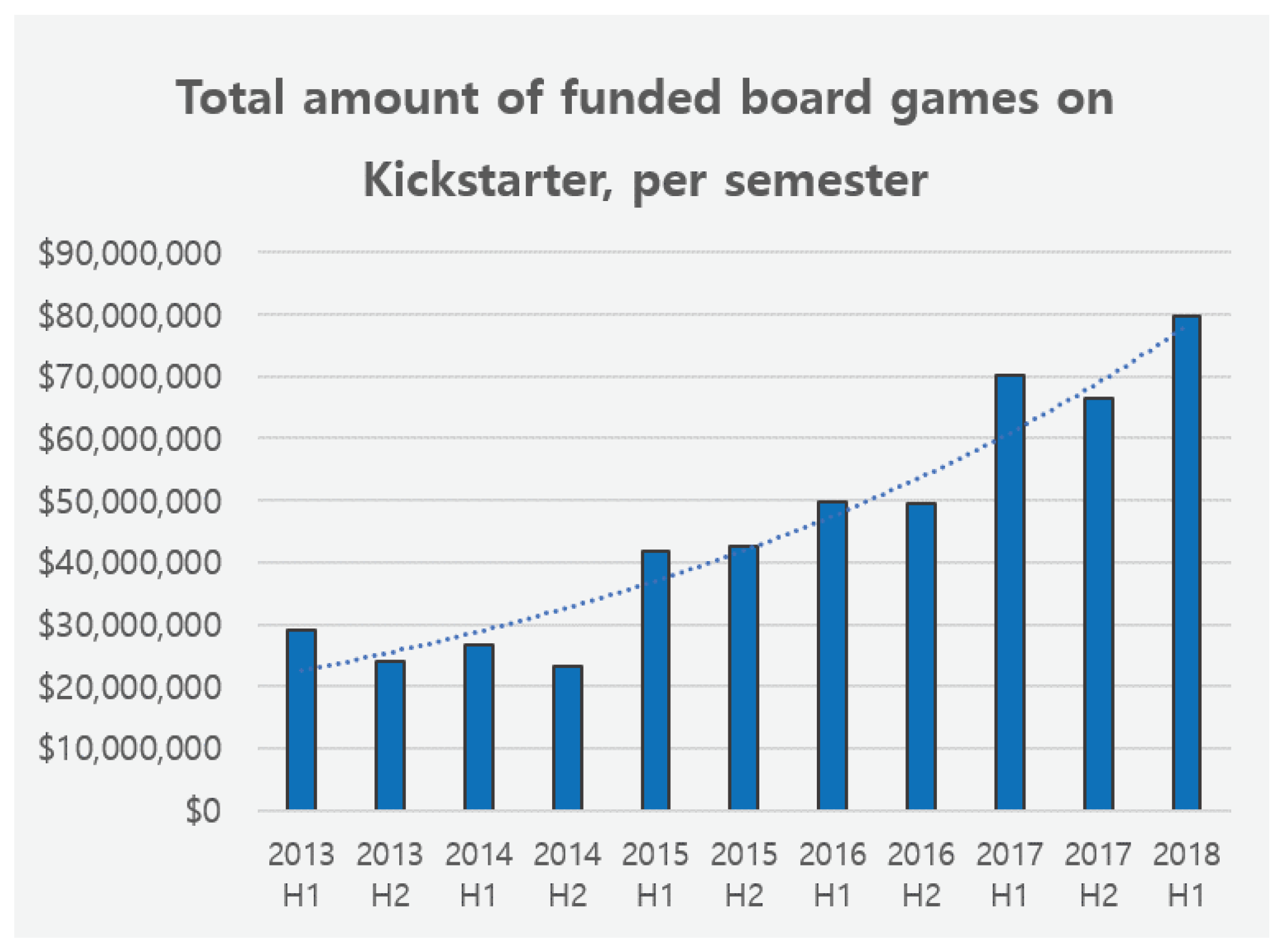
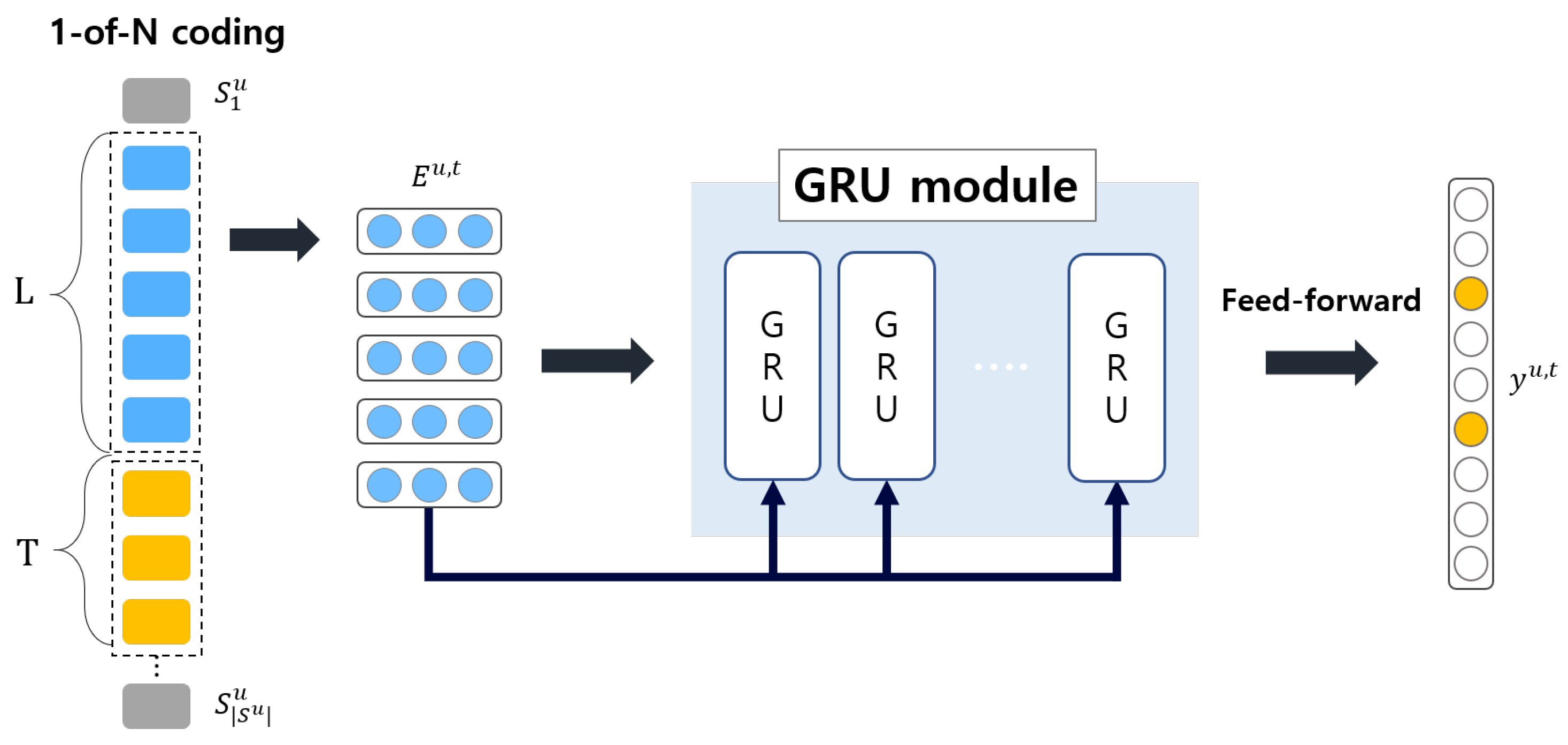
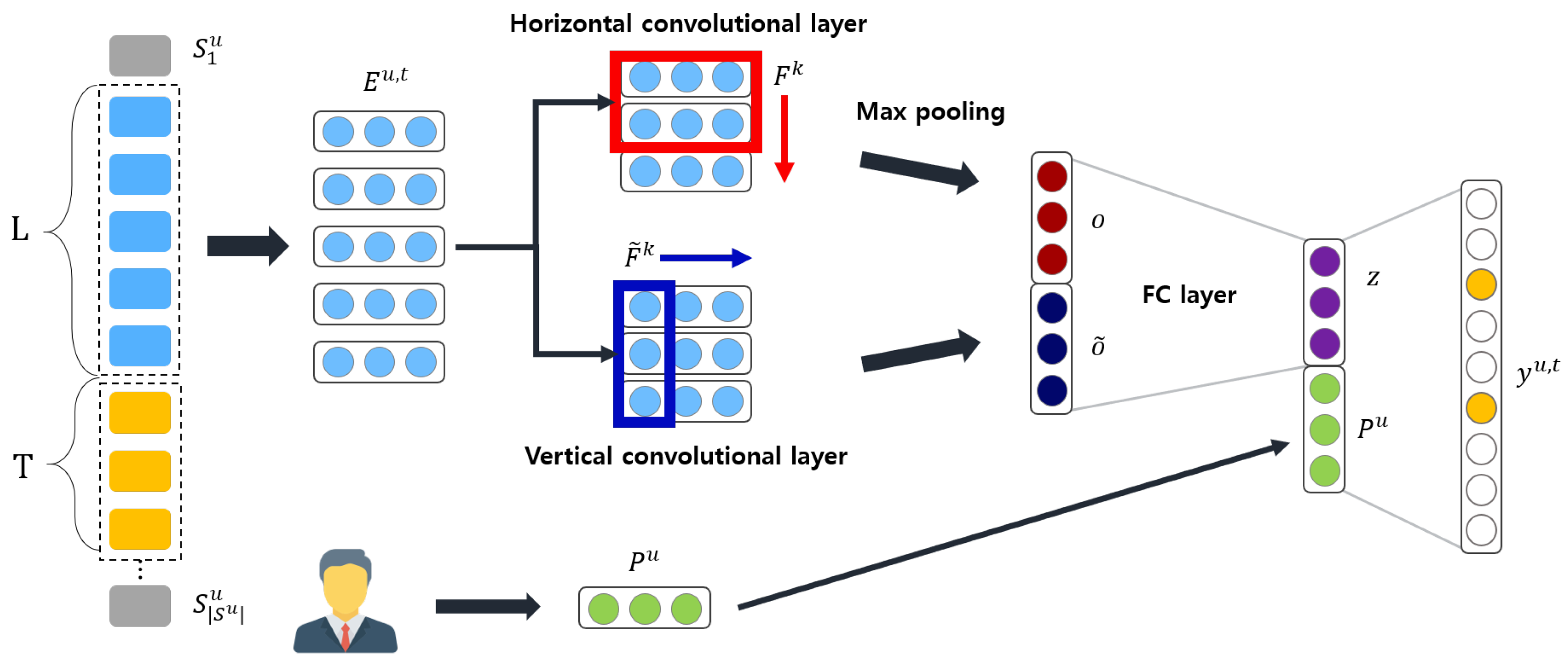
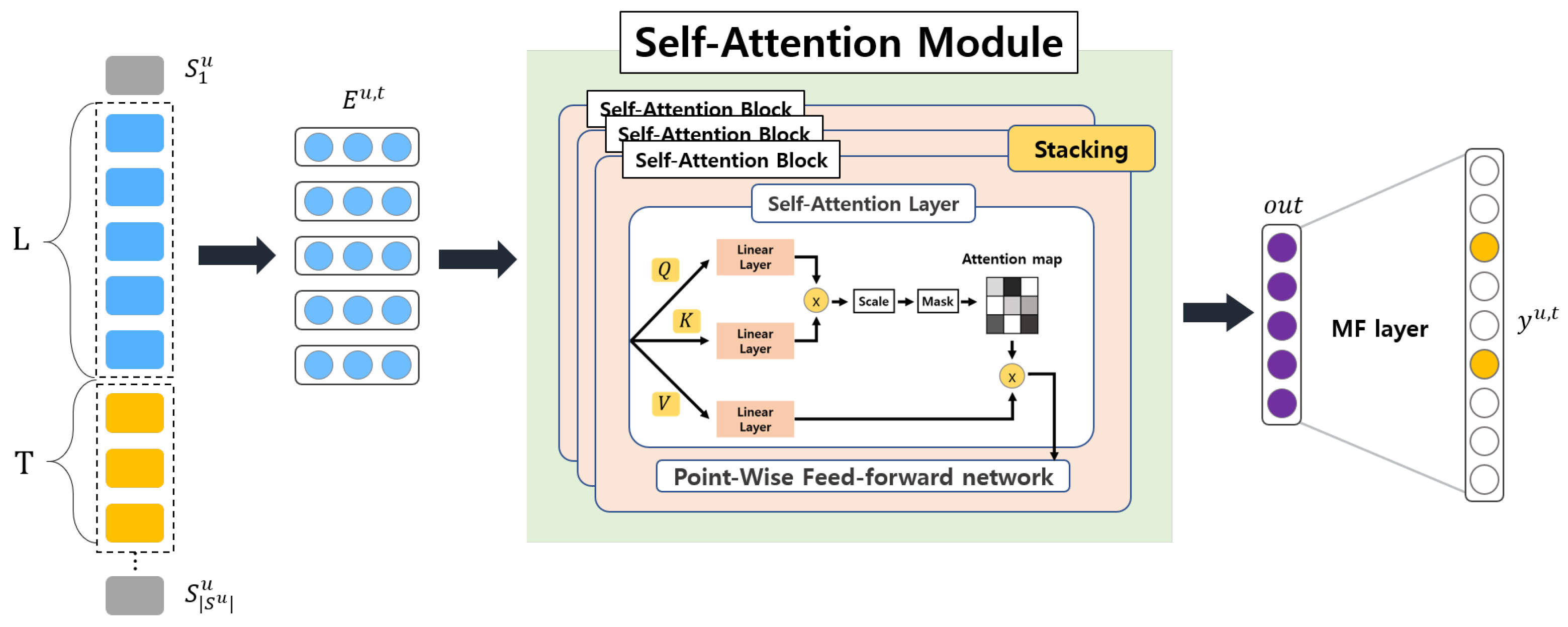
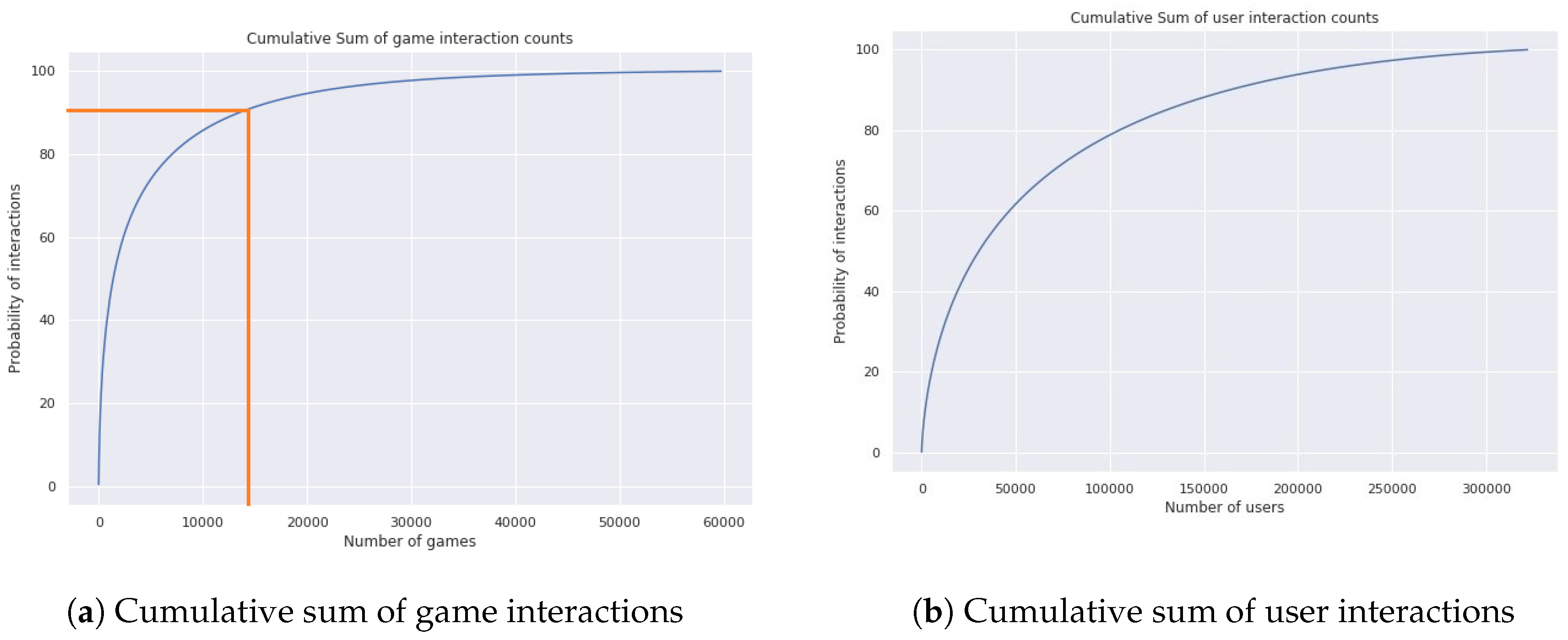
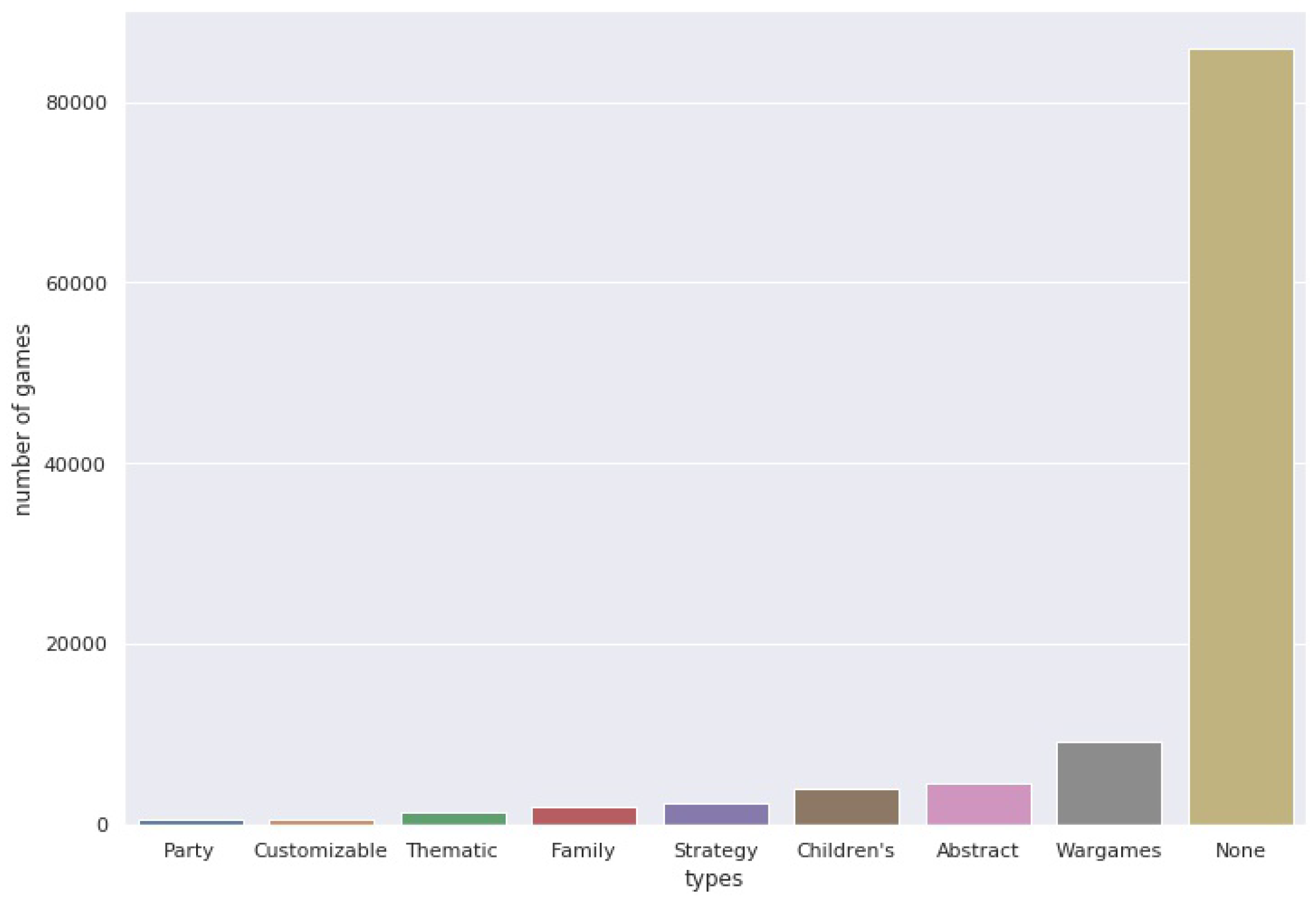
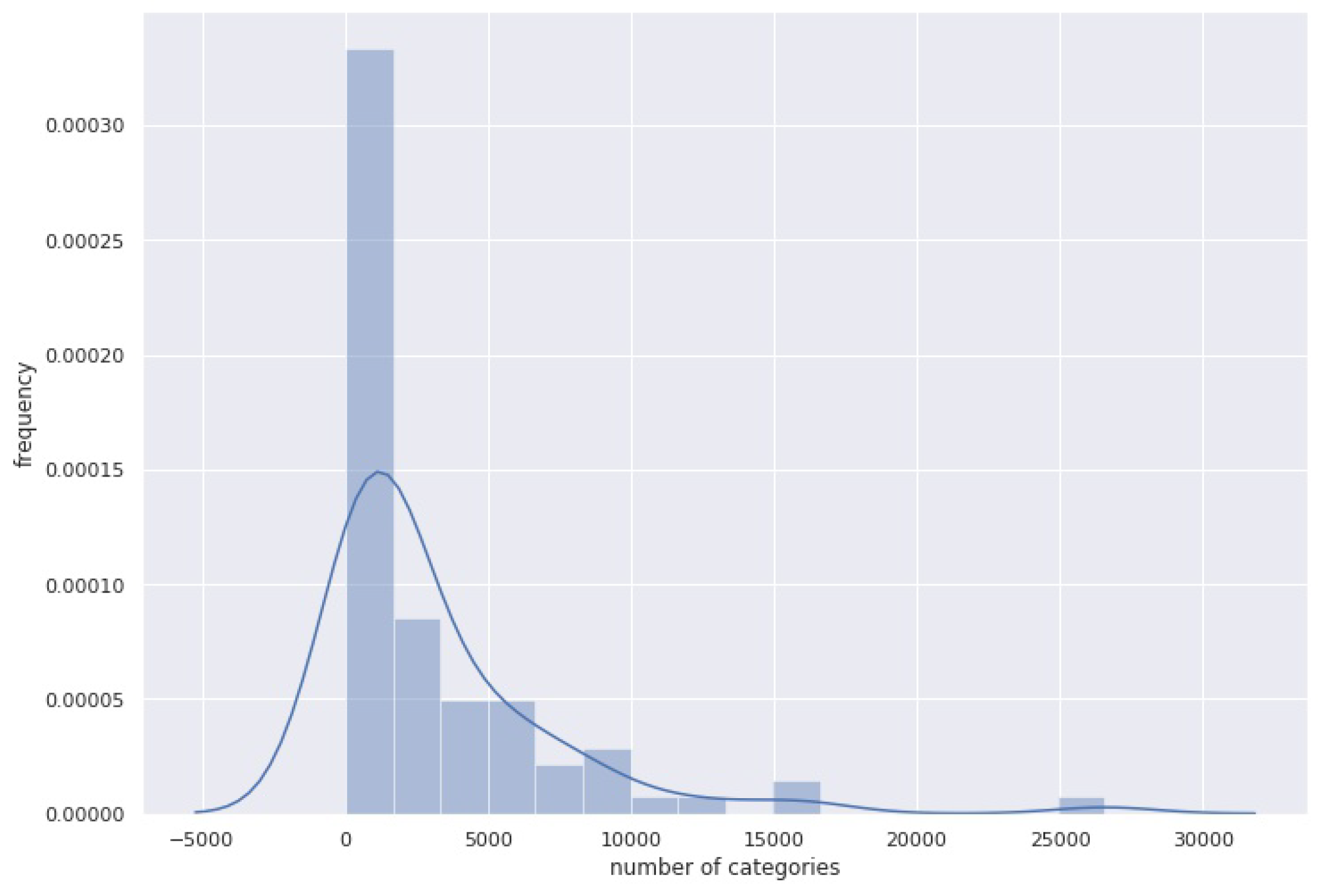
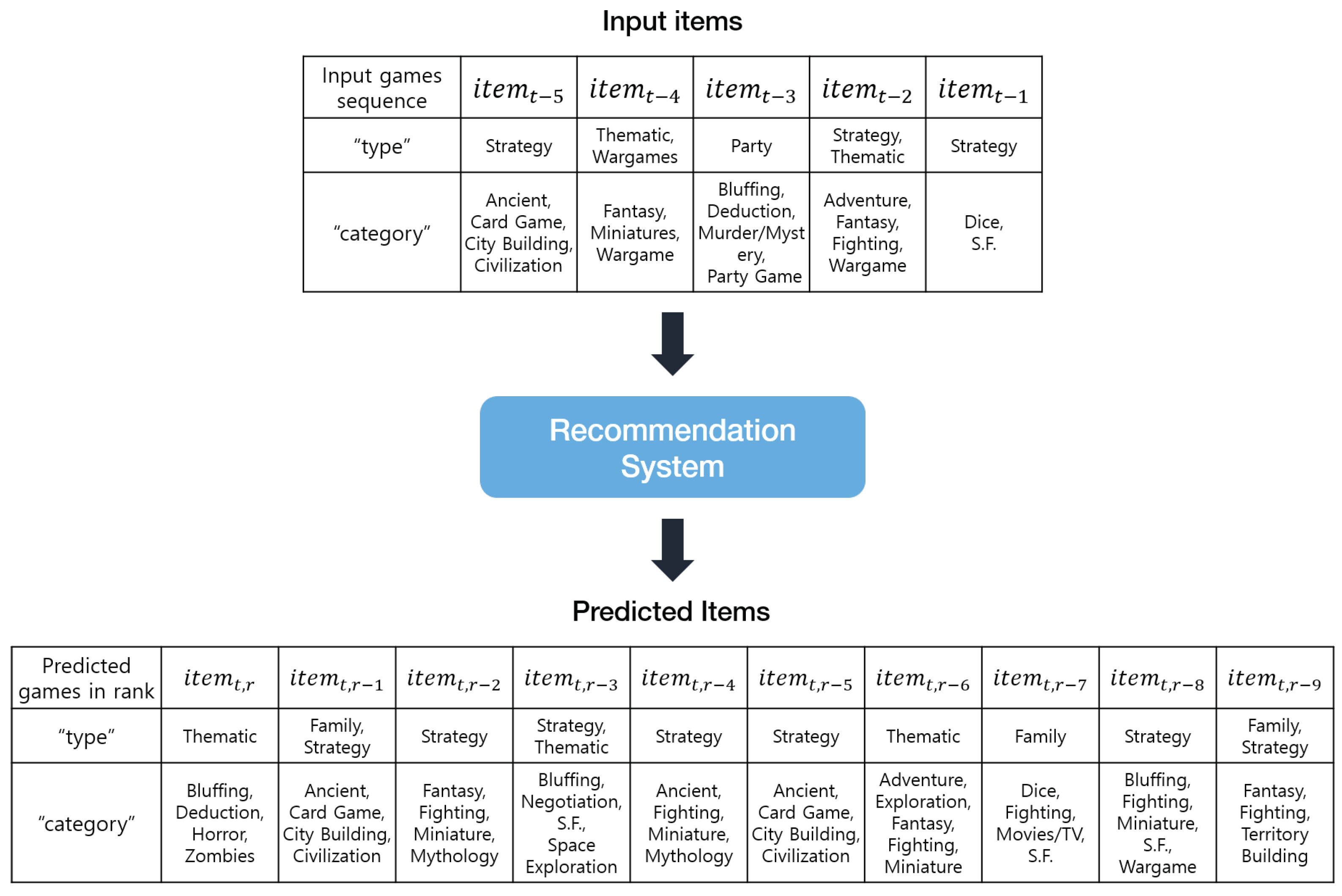
| BGG Dataset | ||
|---|---|---|
| Feature | Type | Description |
| game_id | Int | Unique id of the game |
| game_title | Str | Title of the game |
| year | Int | Production year |
| people | Str | A range of the number of people recommended playing with |
| play_time | Int | The approximate time duration for a gameplay |
| age | Str | Information on age restriction |
| BGG_ratings | [Str] | Average ratings from users |
| designer | [Str] | Designers of the game |
| artist | [Str] | Visual artists of the game |
| publisher | [Str] | Publisher of the game |
| type | [Str] | Types of the game |
| category | [Str] | Categories of the game |
| User ratings | Dict | User rating dictionary |
| User Ratings | ||
|---|---|---|
| Feature | Type | Description |
| user | Str | A key for unique usernames |
| score | Int | A score for the ratings |
| status | [Str] | Status of acquisition of the game |
| time_stamp | smalldatetime | Rating/comment created time |
| Datasets | #users | #items | #interactions | avg.inter./user | avg.inter./item | Sparsity |
|---|---|---|---|---|---|---|
| ML 1M | 6022 | 3043 | 999,154 | 165.25 | 327.03 | 94.57% |
| ML 20M | 138,493 | 18,345 | 19,984,024 | 144.30 | 1089.34 | 99.21% |
| Beauty | 22,363 | 12,101 | 198,502 | 8.88 | 16.40 | 99.93% |
| Video Games | 108,063 | 31,390 | 21,105,584 | 9.54 | 21.72 | 99.38% |
| Steam | 62,944 | 9198 | 5,132,610 | 81.54 | 558.01 | 99.11% |
| BGG | 388,413 | 87,208 | 47,351,708 | 121.91 | 542.97 | 99.86% |
| Descriptive Statistics | ||
|---|---|---|
| min. number of interactions | 8 | 200 |
| number of interactions | 33,564,515 | 16,090,930 |
| number of unique users | 322,061 | 36,164 |
| number of unique games | 59,746 | 14,686 |
| data sparsity | 99.83% | 96.97% |
| average interactions per user | 104.22 | 444.94 |
| average interactions per game | 561.76 | 1095.66 |
| Models | n = 8 | n = 200 | ||||||||
|---|---|---|---|---|---|---|---|---|---|---|
| Prec@10 | Recall@10 | MAP | MRR | NDCG@10 | Prec@10 | Recall@10 | MAP | MRR | NDCG@10 | |
| GRU4Rec | 0.003 | 0.005 | 0.003 | 0.002 | 0.011 | 0.082 | 0.022 | 0.037 | 0.011 | 0.1873 |
| Caser | 0.061 | 0.112 | 0.074 | 0.053 | 0.142 | 0.1921 | 0.052 | 0.092 | 0.025 | 0.355 |
| SASRec | 0.058 | 0.108 | 0.07 | 0.05 | 0.135 | 0.175 | 0.047 | 0.079 | 0.023 | 0.344 |
© 2020 by the authors. Licensee MDPI, Basel, Switzerland. This article is an open access article distributed under the terms and conditions of the Creative Commons Attribution (CC BY) license (http://creativecommons.org/licenses/by/4.0/).
Share and Cite
Kim, J.; Wi, J.; Jang, S.; Kim, Y. Sequential Recommendations on Board-Game Platforms. Symmetry 2020, 12, 210. https://doi.org/10.3390/sym12020210
Kim J, Wi J, Jang S, Kim Y. Sequential Recommendations on Board-Game Platforms. Symmetry. 2020; 12(2):210. https://doi.org/10.3390/sym12020210
Chicago/Turabian StyleKim, JaeWon, JeongA Wi, SooJin Jang, and YoungBin Kim. 2020. "Sequential Recommendations on Board-Game Platforms" Symmetry 12, no. 2: 210. https://doi.org/10.3390/sym12020210
APA StyleKim, J., Wi, J., Jang, S., & Kim, Y. (2020). Sequential Recommendations on Board-Game Platforms. Symmetry, 12(2), 210. https://doi.org/10.3390/sym12020210





